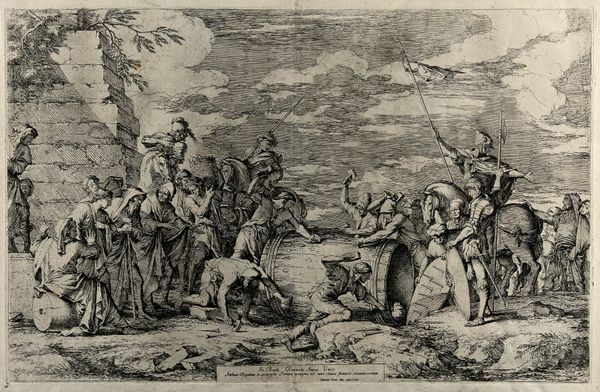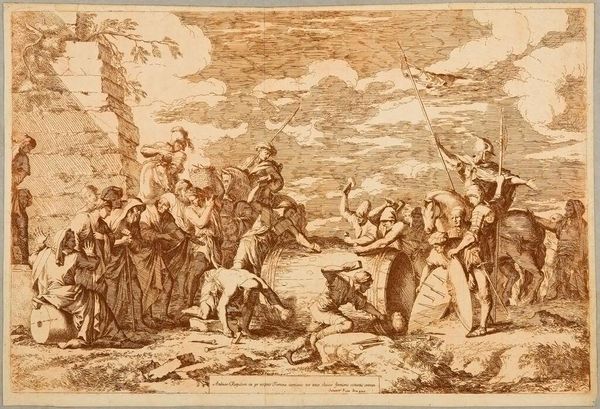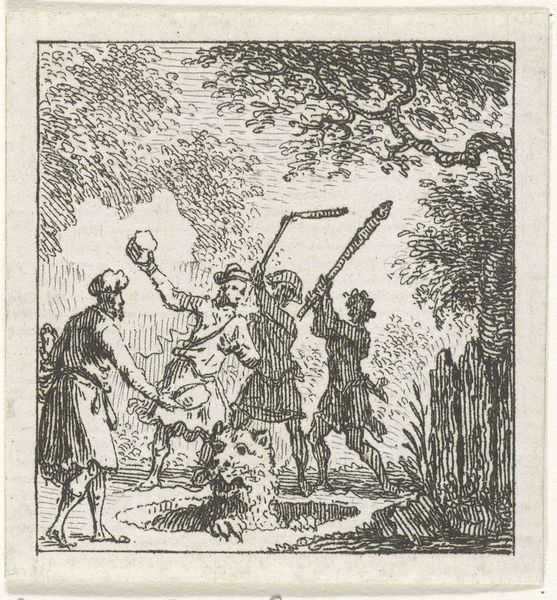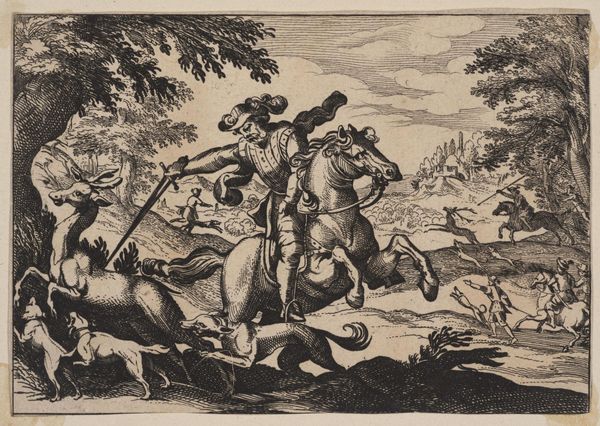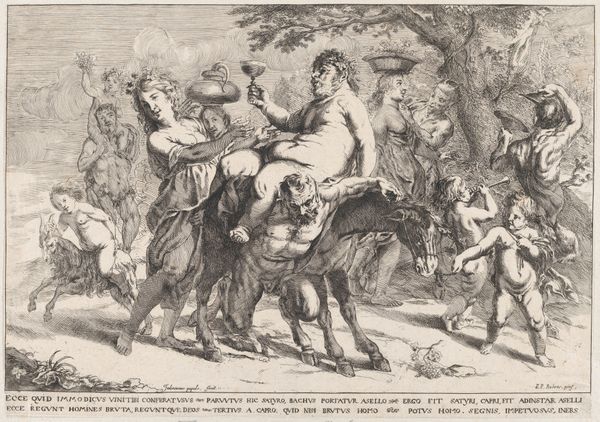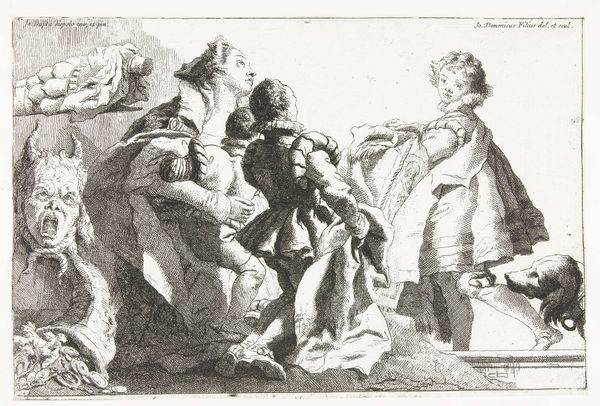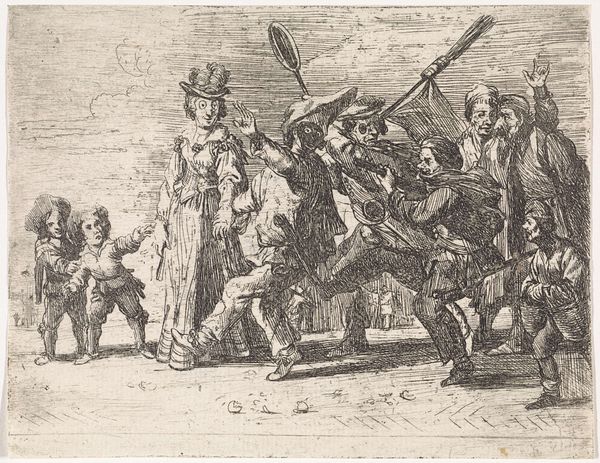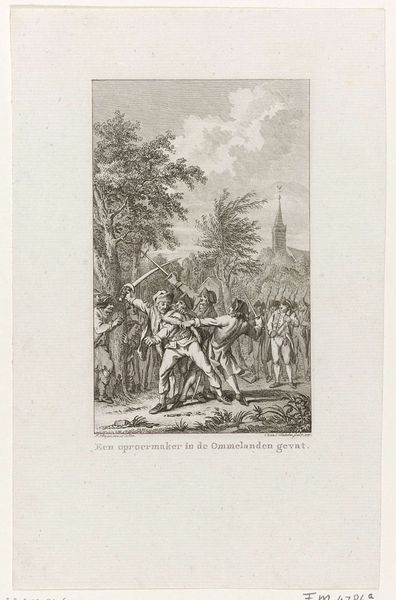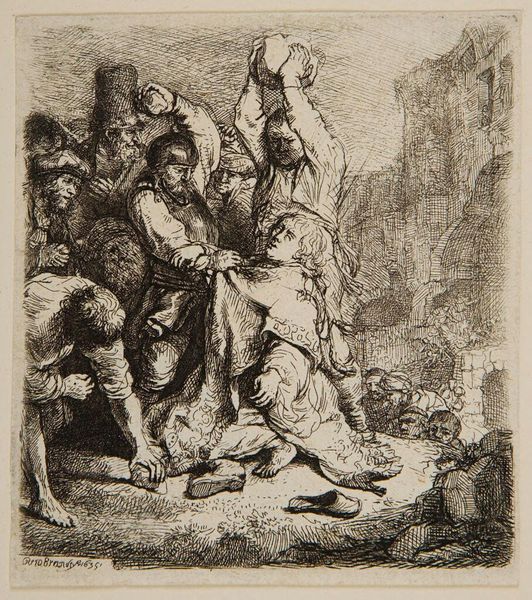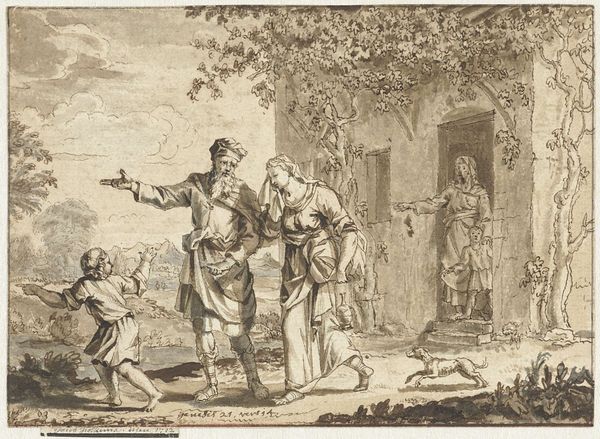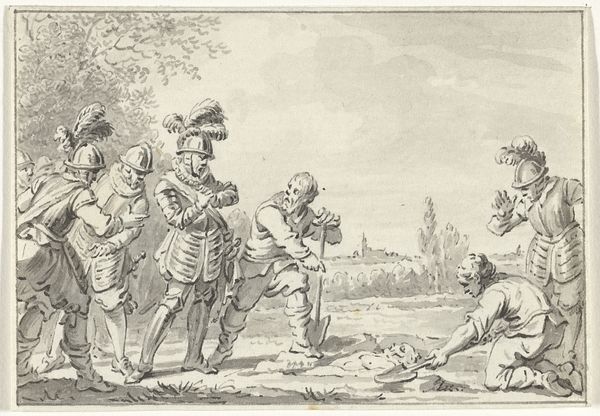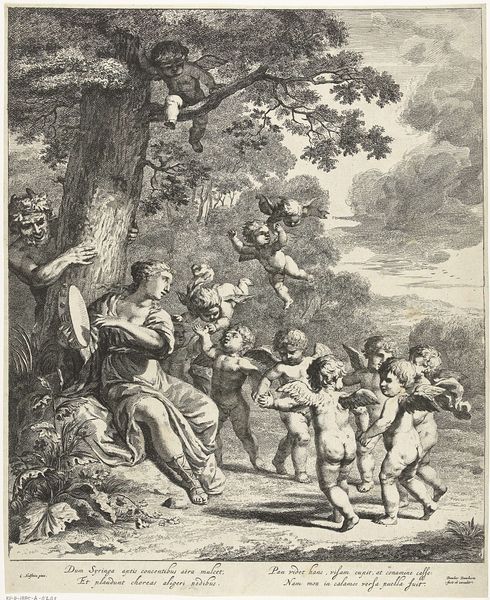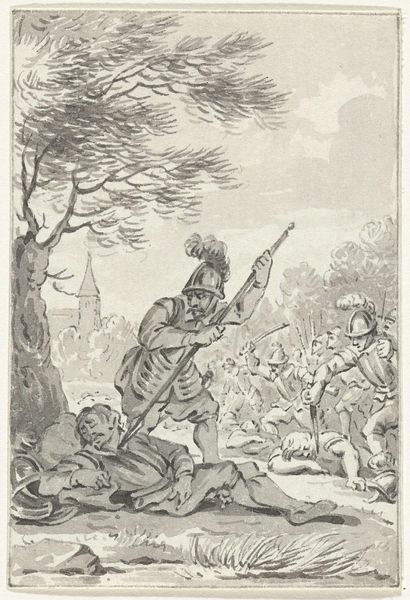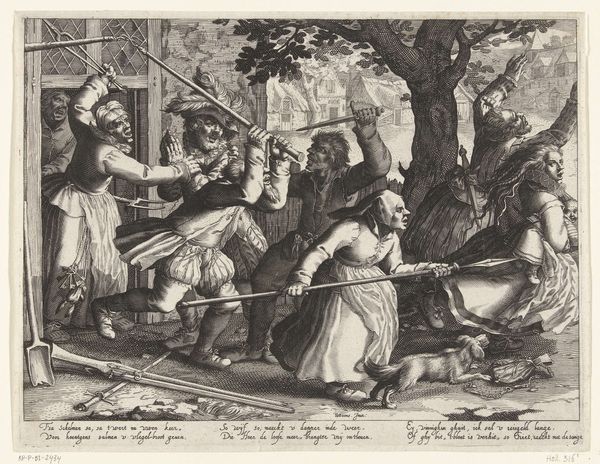
Dimensions: 269 x 285 cm
Copyright: Public domain
Curator: Goya’s "The Kite," painted in 1778, presents an idyllic scene of leisure, almost a tableau vivant. Editor: There’s a beautiful, airy quality to it, with that soft gouache giving everything a dreamy luminescence, though the composition feels somewhat crowded. What exactly is the narrative here? Curator: Well, Goya was working as a tapestry designer for the royal court at this time. "The Kite," along with other paintings, were intended as cartoons—preparatory designs—for tapestries to decorate the royal palace, specifically the King’s dining room at El Pardo. They were meant to represent the seasons and daily entertainments. Editor: So, pure propaganda? This scene presents a distinct class divide—note the opulence of some of the figures and their playful behavior contrasted by the suggestion of labourers at rest, or potentially observing them from the peripheries. It feels deliberately stratified, as a social mirror that confirms inherent status differences. Curator: Exactly! Goya uses compositional strategies to signal status. Consider the arrangement of figures in a pyramidal structure, or the upward direction indicated by gesture of some figures; those standing and reclining draw your eye toward the sky, mimicking the rising kite itself. Light and color also play a critical role: light floods the brightly dressed figures grouped near the top of the hill and is partially shadowed further below. Editor: This hierarchy wasn't accidental. It reinforces social and political power at a time of great social upheaval. Though cloaked in entertainment, these kinds of depictions, in these royal spaces, affirmed the Bourbon monarchy, no? It feels like this art both served the court's ideological requirements, whilst laying the foundation for Goya to exercise his creativity with acute political perceptiveness. Curator: Indeed. These paintings afforded Goya a unique lens through which to observe, document, and comment on societal structures and dynamics. They acted as a visual negotiation—a compromise between his patron’s wishes and his personal vision. Editor: A complicated dance of courtly demand and political awareness. Looking closer, "The Kite" serves as both an echo and precursor to themes Goya explored later in his career. Thanks for illuminating the threads in this piece; I can really appreciate its social fabric now. Curator: Likewise. Reflecting on the arrangement of tones and class dynamics, it offers an even deeper perspective.
Comments
No comments
Be the first to comment and join the conversation on the ultimate creative platform.
